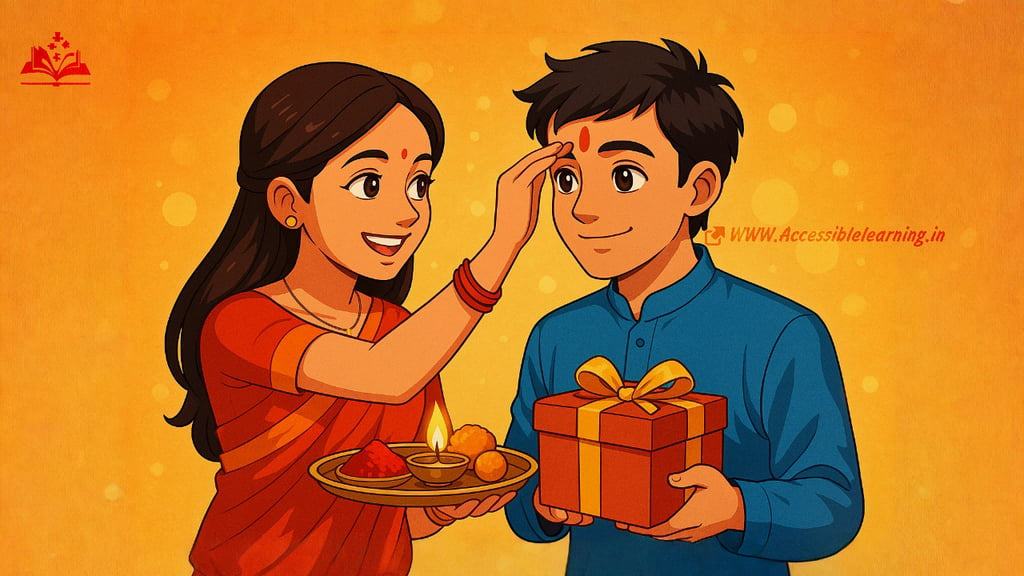
Bhai Dooj: History, Rituals, Significance & Why This Festival is So Special
Bhai Dooj 2025 celebrates the sacred bond of brothers and sisters with rituals, tilak, sweets, and blessings. Discover its history, mythology, regional traditions, and modern celebrations that make this festival unique after Diwali.
CULTURE/TRADITIONEVENT/SPECIALINDIA/BHARATCELEBRATION/FESTIVALS
Keshav Jha
10/16/20253 min read


When we think of Indian festivals that celebrate the bond between siblings, Raksha Bandhan instantly comes to mind. But there’s another equally heartwarming festival, often underrated yet deeply cherished—Bhai Dooj.
Celebrated just after Diwali, Bhai Dooj marks the divine bond between brothers and sisters, where love, blessings, and a sense of protection come alive. Unlike Raksha Bandhan, where sisters tie a rakhi, Bhai Dooj has its own charm and rituals rooted in mythology, family togetherness, and cultural beauty.
In this article, let’s dive deep into Bhai Dooj’s history, rituals, significance, and why it continues to matter in today’s world.
When is Bhai Dooj Celebrated in 2025?
Date: Thursday, October 23, 2025
Occasion: Falls on the Dwitiya Tithi (second day) of Shukla Paksha in Kartika month, just two days after Diwali.
It usually aligns with the Govardhan Puja and is often the concluding festival of the grand Diwali celebrations.
The Mythological Origins of Bhai Dooj
Bhai Dooj is backed by fascinating legends that explain why this festival became such a special part of Indian tradition:
Yamraj and Yami (Yamuna)
According to Hindu mythology, Yamraj (the God of Death) visited his sister Yamuna on this day. She welcomed him with love, applied a tilak (vermillion mark) on his forehead, and served him delicious food. In return, Yamraj granted her a boon that every brother who visits his sister on this day would live long and prosper.
This is why Bhai Dooj is sometimes also called Yam Dwitiya.
Krishna and Subhadra
Another legend says that after slaying the demon Narakasura, Krishna Ji visited his sister Subhadra. She greeted him with sweets and flowers and applied a ceremonial tilak—a ritual that forms the basis of Bhai Dooj even today.
Rituals of Bhai Dooj
Unlike Rakhi, Bhai Dooj rituals revolve around a sacred tilak ceremony and the emotional reunion of siblings.
Tilak & Aarti—Sisters apply a red vermillion tilak on their brother’s forehead, followed by aarti (lighted diya ritual) for his well-being.
Feast of Love—Brothers are invited to their sister’s home and served traditional sweets and meals. Popular dishes include puri, kheer, ladoo, and halwa.
Gifts & Tokens—Brothers give thoughtful gifts to sisters in return for their blessings, nowadays ranging from jewelry and sarees to gadgets and cash envelopes.
Regional Variations—
In West Bengal, it’s called Bhai Phonta.
In Maharashtra & Goa, it’s celebrated as Bhau Beej.
In Nepal, the festival is known as Bhai Tika, where sisters put a multi-colored tika on their brother’s forehead.
Symbolism & Significance
Love Beyond Protection—Unlike Rakhi, where the focus is on protection, Bhai Dooj is more about long life, blessings, and mutual respect between siblings.
Family Reunion—It strengthens family ties, especially in today’s world where siblings often live apart.
Spiritual Value—The tilak is believed to protect brothers from negative energies and bring them good fortune.
Bhai Dooj in Modern Times
While traditional rituals remain intact, modern families have added their own unique touches:
Virtual Bhai Dooj—With siblings living abroad, video calls with digital tilaks and online gifts are becoming popular.
Eco-Friendly Celebrations—Many families prefer organic tilak powders and homemade sweets.
Gift Trends—From personalized hampers to NFTs and AI-generated artworks, Bhai Dooj gifting has leveled up!
Equality Twist—In some households, sisters also receive tilaks from brothers, symbolizing mutual blessings.
Cultural Coolness of Bhai Dooj
What makes Bhai Dooj stand out is its timeless relevance:
It’s not just a festival; it’s an emotional bridge between siblings, regardless of distance.
It has evolved from mythological legends to a global festival of siblinghood celebrated by Indian communities worldwide.
The festival adds a sweet emotional closure to the Diwali season, reminding us that family is the ultimate light in our lives.
Bhai Dooj is more than just tilaks, sweets, and gifts. It’s a festival of memories, promises, and lifelong companionship between siblings. While Diwali symbolizes the victory of light over darkness, Bhai Dooj symbolizes the victory of love over distance and time.
So this Bhai Dooj 2025, whether you’re celebrating in person or virtually, don’t just follow rituals—make it meaningful, modern, and memorable. Because festivals are not only about traditions; they are about keeping hearts connected.
Subscribe to our newsletter
All © Copyright reserved by Accessible-Learning
| Terms & Conditions
Knowledge is power. Learn with Us. 📚


